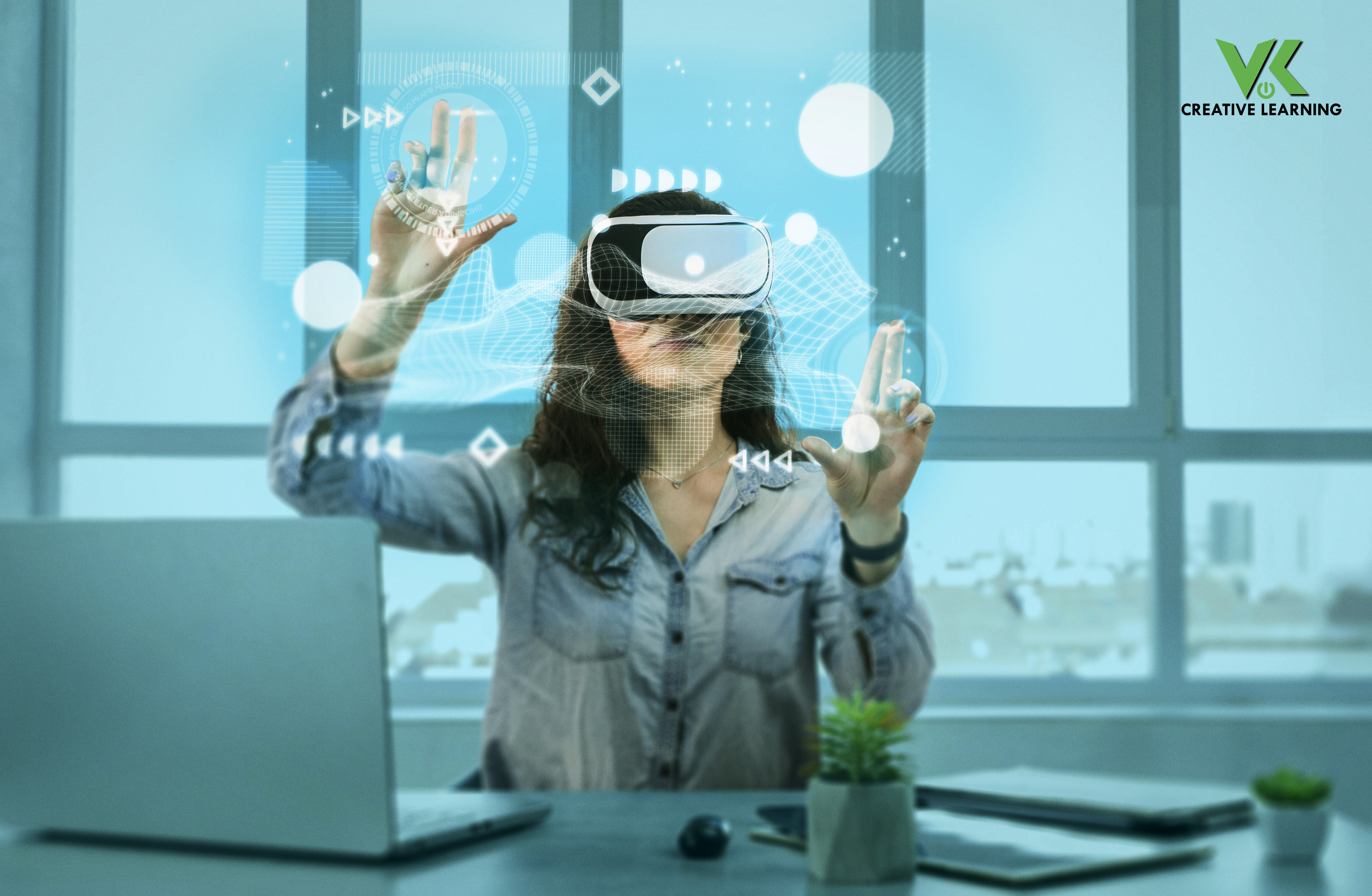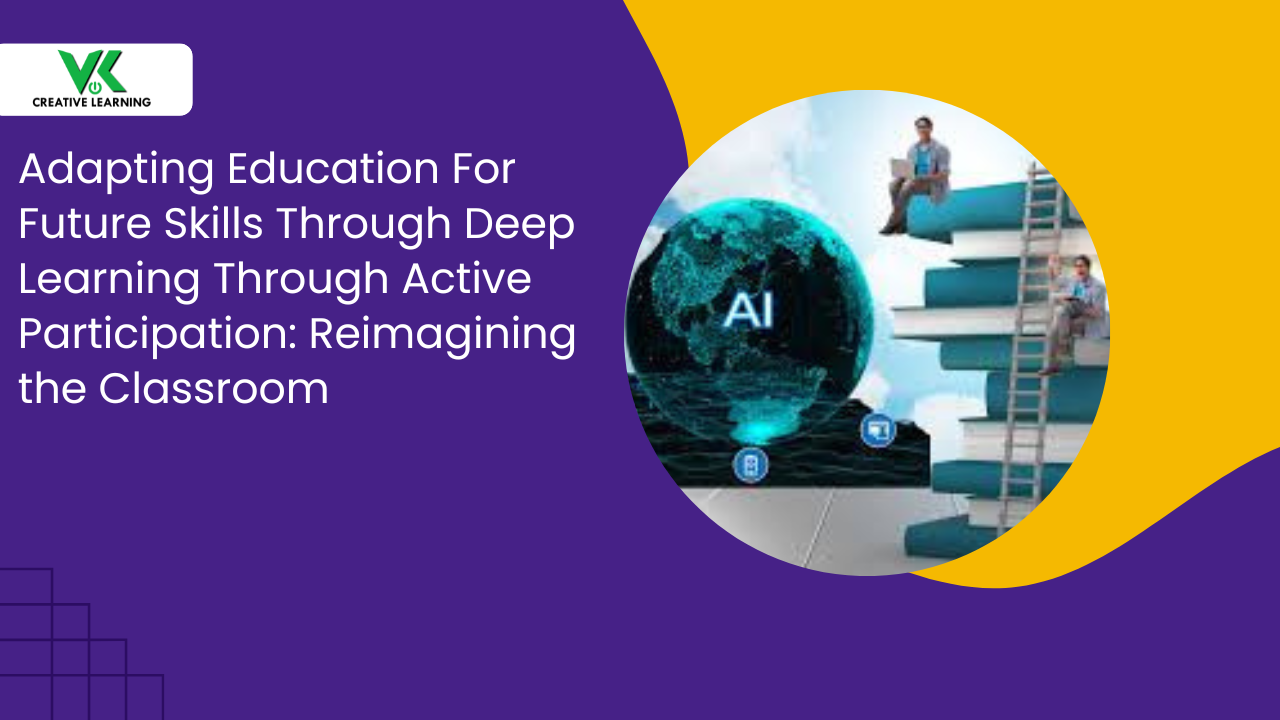Essentials for Engaging Learning; How AR/VR eLearning Can Fill That Gap for Students
November 30, 2023
Engaging learning means creating an environment for the students wherein they are able to participate actively; connect with the subject being taught, and understand the concepts thoroughly.
Importantly, this form of learning which demands steady attention from the students transcends conventional passive comprehension and helps students to discover something new every time.
Hence, it is equivalent to a situation where students are ever-vigilantly rowing their boats in the sea of knowledge but gaining information at every turn -- that’s the beauty of engaging learning.
But Does Engaging Learners Truly Help Them in Their Academic Growth?
Engaging learners and directing their attention to something that stimulates curiosity in them to know more about the learning topic can help their critical thinking process. This is one of the reasons why engaging students through active learning holds so much of importance.
Importantly, when students are pushed toward engaging learning experiences, their motivation level goes up considerably. Subsequently, this motivates them to absorb the information quickly rather than seeing it more like an obligation -- learning forcefully.
You can think student’s mind as a garden, full of curious thoughts to discover and explore new things happening around them -- like flowers ready to bloom and new buds ready to shoot. Unless engaging content is not provided to them, they may not be curious to learn about the topic which in turn may not enable them to connect with the content.
One has to remember that an engaged student perceives education not as an ordeal that has been put more like a burden on him but looks at it as a fascinating adventure worth seeking wholeheartedly.
AR/VR Academic eLearning Solutions: These forms of courses allow students to explore the world up-close -- VR-based headset takes children to a world enveloped by knowledge whereas an AR-based device offers information, properties, and other essential information of the objects the individual points to.
Essential Aspects for Engaging Learning -- Spark Curiosity
To teach kids in a way they understand, it is highly essential to make the learning interesting and appealing to them, and the same can be done by following the given below techniques.
A. Interactive Content (Use of AR/VR-based eLearning): Students would find fun in learning when it is interactive in nature. Interactive content also means that students would play with them and work on them by themselves more like doing them practically. This technique helps them to understand the concepts easily as they are getting hands-on experience.
This can be achieved by using AR/VR-based eLearning solutions that have all the necessary elements to make the learning experience interesting and filled with fun -- reason: eLearning is interactive in nature.
To understand this, let us take an example wherein the students are exposed to the idea of working on virtual simulations or playing interactive educational games using AR/VR-based eLearning platforms.
With this approach, learning becomes easy as students not only find such interactive platform interesting and exciting but also it creates an enthusiasm to pursue learning as they progress to different levels (as it happens when playing games).
A wonderful example in such a case would be to talk about the way AR can serve; especially in teaching kids about different types of shapes used in the subject of geometry. Elaborately put, with AR put to use, students can play or interact with 3D shapes -- that too real-time.
This will make those typical tricky shapes and their properties easier to grasp. And most importantly, this form of one-to-one interaction shall make the visualization of objects in space more simple. Thus by mixing AR/VR technology with experiential teaching like this, learning will surely turn fun and exciting for students!
A Closer Look at Types of Interactive Content
When we explore the world of interactive content, it is more like coming across a treasure chest containing exciting goodies for all types of learners. But what makes the AR/VR interactive content so interesting -- virtual simulations, easy-to-understand quizzes, and level-based games (various types of interactive content provided by AR/VR learning courseware).
In other words, there is something for everyone or their preferences based on their learning style.
Microlearning interactive modules: in this form of learning, students are provided with small modules that are interactive (e.g., user-friendly graphics) and concepts are broken into small pieces and presented to the students in those modules.
In this form of learning, the content is presented in bright colors with knee drawings showing complicated things in a simple-to-understand way. The best aspect of being: it has something that most kids love -- and that it has information presented in small chunks. This knowledge delivery is in the form of lots of examples containing diagrams and other visual representations. Hence, the understanding is quick, sweet, and to the point - speedy understanding; effortless grasp.
Virtual Labs: This is a very interesting concept that AR/VR e-learning solution provides to the students wherein they are able to express themselves or experiment with the given conditions (it can be like working in a physics/chemistry lab) with their own ideas.
In other words, it becomes a digital playground for them where they can try out all sorts of research or theories without any kind of worries or putting themselves in a very perilous situation as it happens in the real lab.
The same can be true or applied to mathematics by immersing the students in a world full of numbers using virtual reality settings. The idea over here is to make the students interact with the numbers; work with the theorems, or conceptual properties, and get well acquainted with them.
Teaching Real-World Relevance to Children Using AR/VR Elearning Solutions
AR/VR digital learning modules can serve as a useful tool that can help children to relate to the real-world applications of various concepts. In the subsequent sections, we will go across all the possible ways that AR/VR eLearning courses can help children to better understand a complex concept and their application in real life.
Explaining Real-World Scenarios With Examples to School Children:
One of the most important aspects that students may miss out on in the usual learning system is the ability to relate the real-world applications or how different information that they learn is used in day-to-day life.
With the use of AR and VR eLearning solutions, it becomes possible for the school to show how the properties or anything related to the object can be understood with the help of AR devices and how those object objects behave under different parameters such as temperature or pressure using VR devices.
Providing Contextually Relevant Skills Related To Various Subjects:
The VR-based eLearning courses can make students aware of their responsibilities toward the societies (think of civics chapters). On the other hand, when problem-solving exercises (based on daily situations) are included in the science/math classes through eLearning courseware, it would help to enhance the critical thinking skills of the students.
Conclusion:
With the help of AR/VR educational options, students not only gain knowledge about also are able to connect with real-life problems. Moreover, students are able to contextually relate the subject-specific knowledge to their own experiences and at the same time, become aware of the civic responsibilities too.
If you as a company want to develop an AR/VR-based eLearning courseware, you can approach VKCL -- a firm that has gained expertise in the same working for more than a decade.




